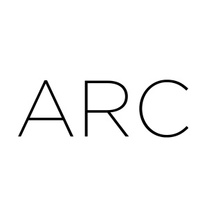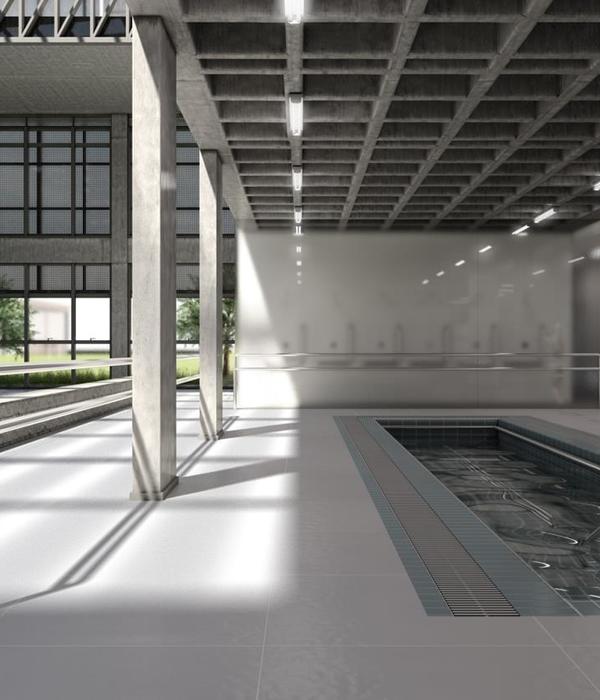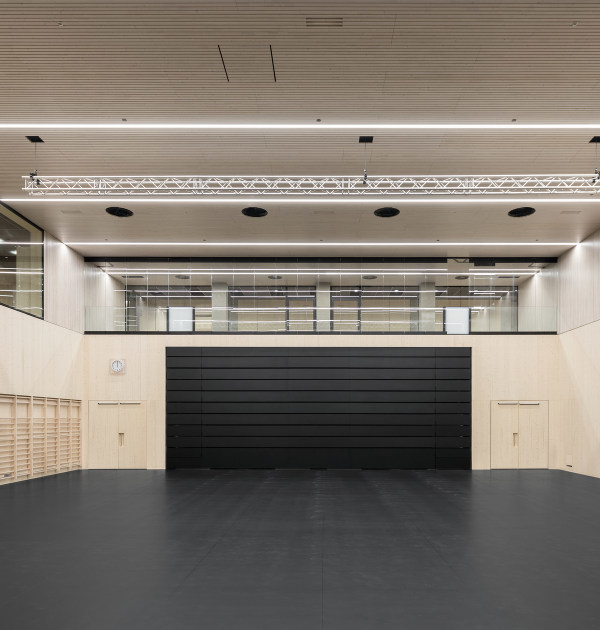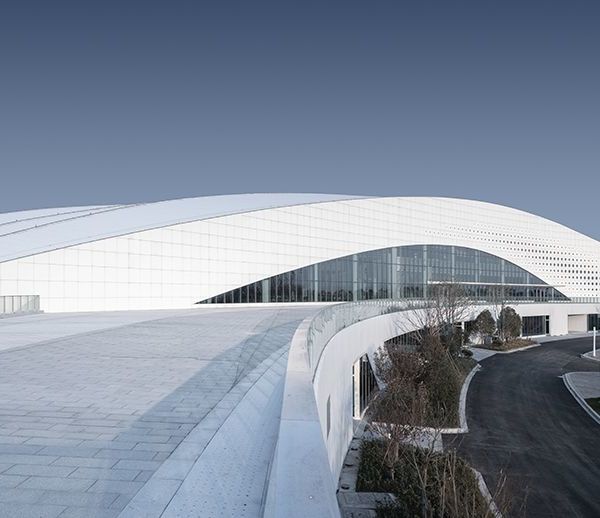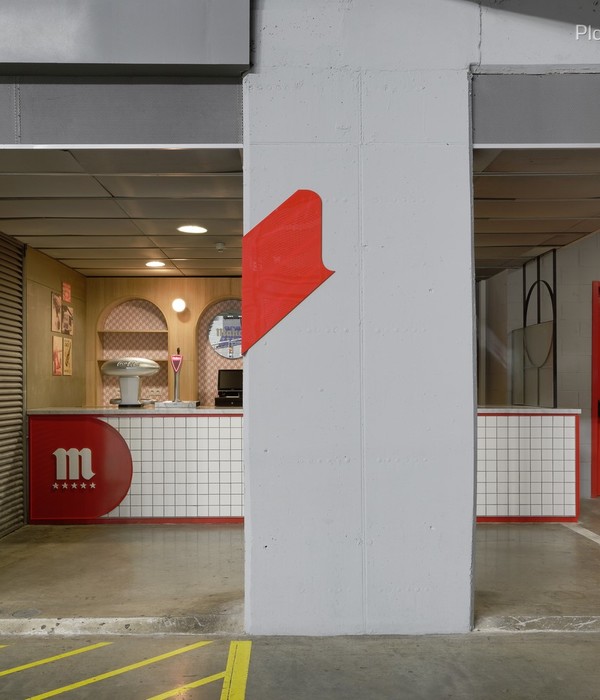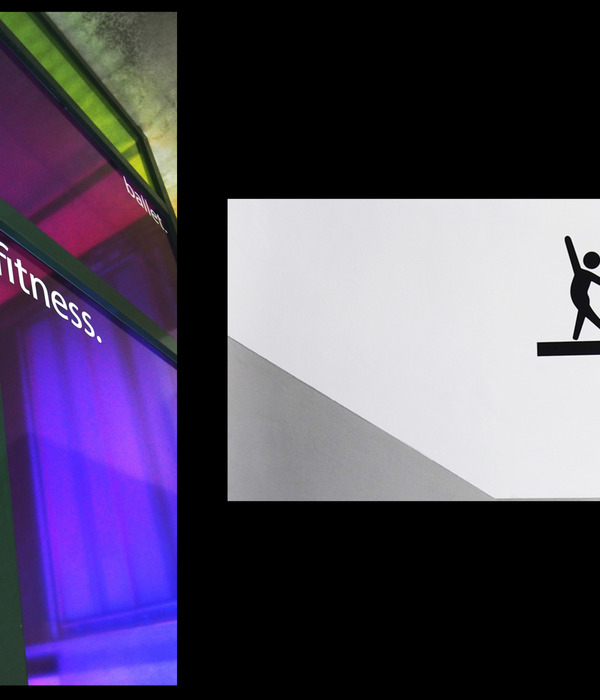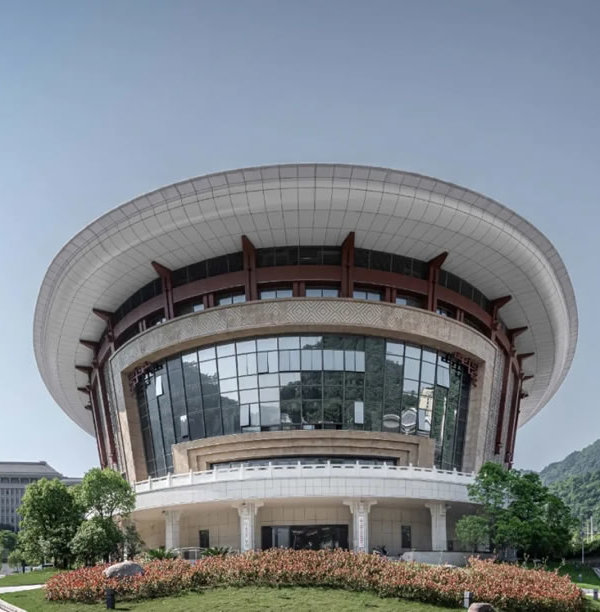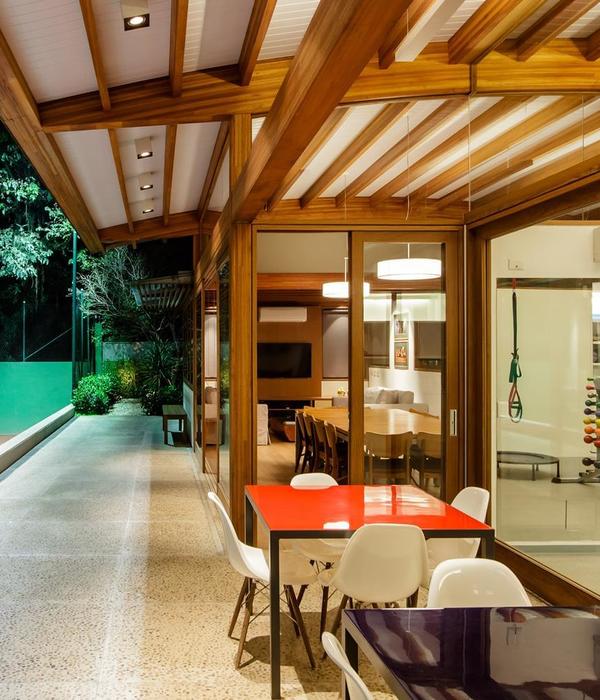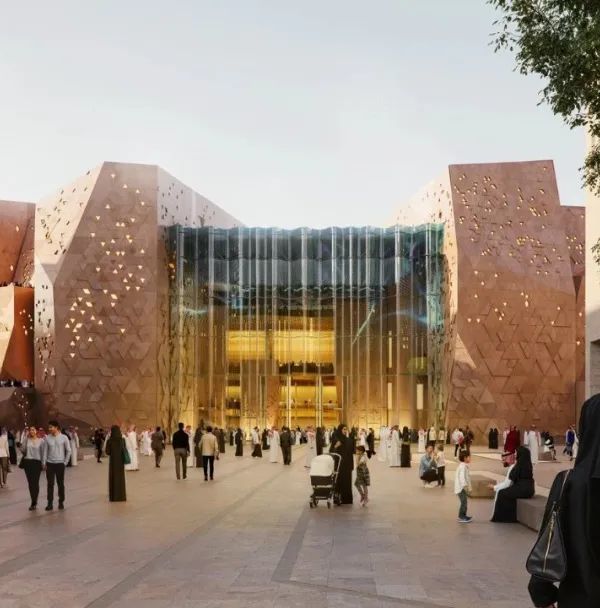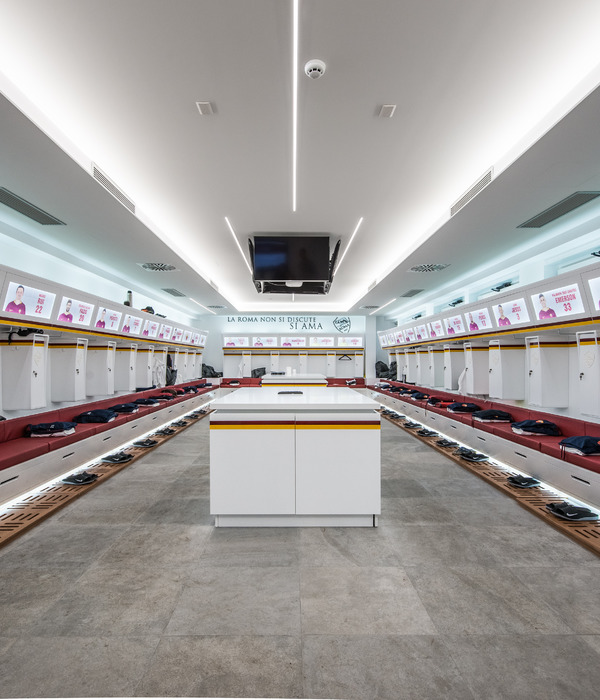ARC 项目 | 创新野生动物通道设计
“景观设计师理应推进这项新型道路设施的建设”。 –评奖委员会
“Landscape architects should promote and encourage this for a major funding initiative for new road construction.”. — 2017 Awards Jury
野生动物通道(Animal Road Crossing,简称ARC)项目是一项跨学科的综合行动,旨在为下一代的野生动物通行设施寻找新的思路、方法、材料及解决方案,以(重新)连接被道路分散的景观。尽管受到正规的跟踪记录,大部分的野生动物通道仍由传统的车用高速公路转化而来。ARC项目发起了全球首个野生动物通道的设计竞赛,鼓励最优秀和最具创新力的景观设计师,以创新、适应性、高性价比和启示性为原则,对下一代野生动物通行结构进行构思。竞赛激发了诸多适时且具有价值的创新设计,并使其从相对小众的地位变为主流。野生动物通道的项目已经越来越多地出现在景观专业的毕业设计中,以及以培养创新型问题解决技能为目的的K-12基础教育中。借助设计的变革力量,ARC项目确保了景观建筑学在野生动物通道的创新、生态效益以及安装实施上的有效应用,同时加强了公众对于这一重要公共基础设施的认知和支持。
ARC, the Animal Road Crossing project, is an interdisciplinary partnership seeking to inspire new thinking, new methods, new materials and new solutions for the next-generation of wildlife crossing structures to (re)connect landscapes fragmented by roads. Despite their proven track record, wildlife crossing structure designs have generally been repurposed from traditional highway infrastructure built for vehicles. ARC originated the world’s first International Wildlife Crossing Design Competition to engage the best and most innovative landscape architects in envisioning the next generation of wildlife crossing structures: innovative, adaptive, cost-effective, and revelatory. The Competition spurred development of a new, timely and critical niche in design that has progressed from the relatively obscure to the mainstream, with wildlife crossing design projects increasingly featured in graduate landscape architecture projects and K-12 educational modules aimed at building innovative problem-solving skills. By harnessing the transformational power of design, ARC ensures that landscape architecture informs innovation, improves ecological effectiveness, and facilitates the widespread implementation of wildlife crossings, while raising public awareness of and support for this critical public infrastructure need.
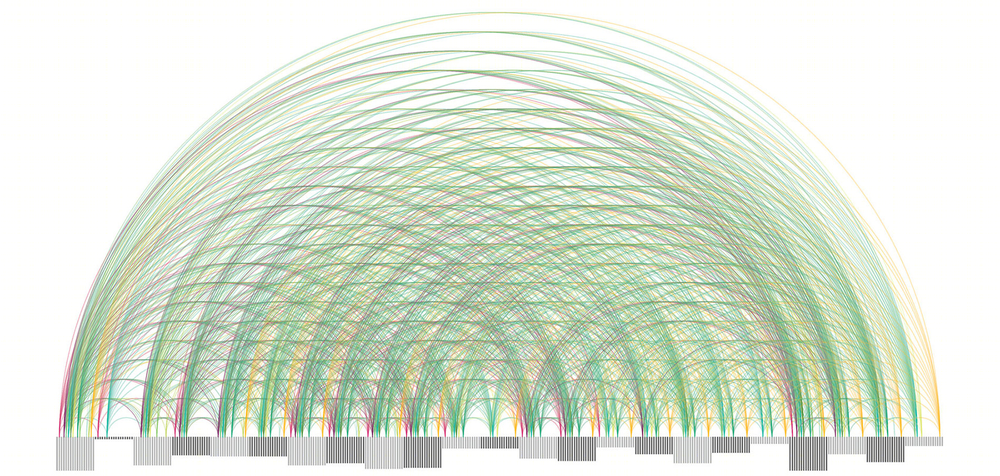
▲ARC的定义源于生态科学。从班夫国家公园收集的野生动物穿越数据可用于追踪哺乳动物对于通道的使用情况。这些通道重新连接了景观,同时使高速公路变得更安全。ARC’s identity emerged from the science of rad ecology — a visualization of wild crossing data collected in Banff National Park tracking crossing use by mammals whose adaptation to this infrastructure reconnects the landscape and creates safer highways.
野生动物通道项目是一项跨学科的综合行动,旨在为下一代的野生动物通行设施寻找新的思路、方法、材料及解决方案,以(重新)连接被道路分散的景观。
公路作为最大的人造障碍物,不仅阻碍了野生动物的通行,还会造成景观的碎片化。仅在美国,每年因车辆碰撞导致死亡和受伤的大型动物数量分别达到100-200万只和2万6千多只,另有约数百人因此死亡。以连接加拿大TransCanada高速公路的班夫国家公园野生动物通道为启发,ARC项目的使命是使人们和动物能够安全地穿行于北美的公路。ARC针对复杂问题提出跨学科的解决方案,并发起了全球首个国际野生动物通道设施设计竞赛( competition.arc-solutions.org),鼓励全世界最具创新性的景观设计师、工程师、交通及生态领域的专业人士共同致力于打造兼顾成本效益、生态友好性、安全、教育性以及灵活性的野生动物通道方案。
ARC竞赛于2010年举行,吸引了来自9个国家的39个跨学科团队,其中包含100多位全球顶尖的科学家和专业设计人员。在此基础上,5个国际团队入围决赛。2011年1月,由国际公认的设计、工程及生态学专家组成的评委会最终将奖项颁给了HNTB和Michael Van Valkenburgh & Associates (MVVA)共同打造的设计方案。从整体上看,这5项入围设计均凭借其优异的创新性和实用性获得了媒体的广泛关注。
时至今日,ARC已经进入到竞赛后阶段,演变为全新的ARC Solutions(arc-solutions.org)。作为跨学科的非营利性机构,ARC Solutions广泛开展有关野生动物通道设施的创新、教育和宣传活动,并致力于通过三项举措(通讯、技术移转和实施应用)来提高大众对于创新性解决方案的认知,以期在景观碎片化的地区重点推行野生动物通道的建设。
虽然竞赛关注的是一个特定的通行场地,但ARC项目所构建的远不止是一座简单的野生动物桥梁:它阐述了如何将生态设计转化为全新的、适时的、有价值的解决方案,并使其从相对小众的地位转变为行业、学术机构和公众价值中的主流。以这种方式,ARC项目启发了创新、改善了生态效益、
推进了野生动物通道的安装实施,同时还加强了公众对于这一重要公共基础设施的认知和支持。
ARC自七年前成立以来取得了诸多重要的成就,包括提高认知能力并克服组织和文化上的障碍,借助传统和非传统的传播手段,以创新且切实可行的方法来促进通道方案的实施:
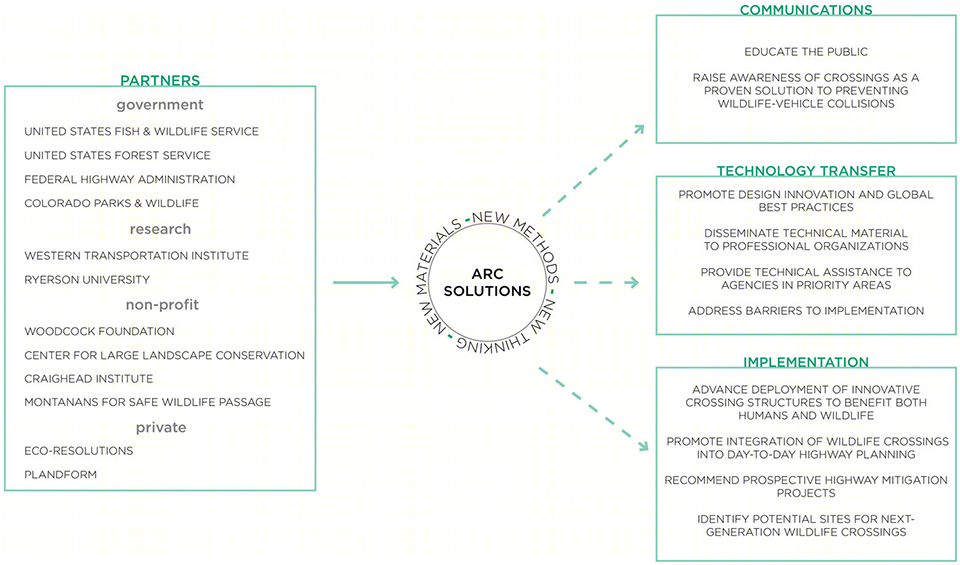
▲ARC的合作伙伴以多种方式支持野生动物通道的科学、设计、施工和教育活动。合作伙伴包括基金会、非营利组织、运输及野生动物机构,以及加拿大和美国的高校。ARC’s partners work in many ways to support the science, design, construction and educational potential of wildlife crossings. Our partners included foundations, non-profit organizations, transportation and wildlife agencies, and universities in Canada and the U.S
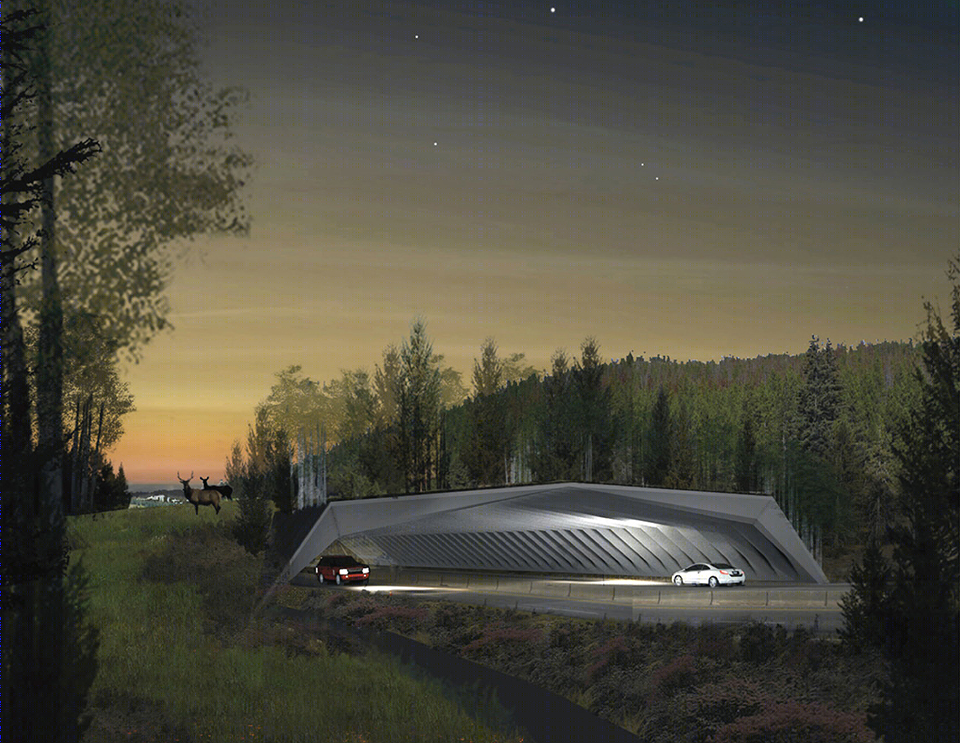
▲获奖方案是建设新型通道的一个强有力的范例。它对普通的材料和施工方法进行了重新诠释,着重关注野生动物的栖息地、活动和生存能力,并具有实用易行和长期可持续的优点。This winning design is a powerful example of innovations needed for new crossing solutions. It recasts ordinary materials and methods of construction combined with emphasis on wildlife habitat, behavior and viability, with a practical intelligence and concern for long-term sustainability.

▲场地平面图。涉及到的要素包括:降低成本;物种状况;并需要根据栖息地或气候的变化考虑建造和材料,以及与野生动物运动模式相适应的结构,同时强调野生动物和景观重建之间的联系。Site plan. Intended to: reduce costs; design for species contexts; considering construction, materials, the need to move or adapt structures based on wildlife movement patterns due to changing habitats or climate; and communicate a renewed relationship with wildlife and landscapes.
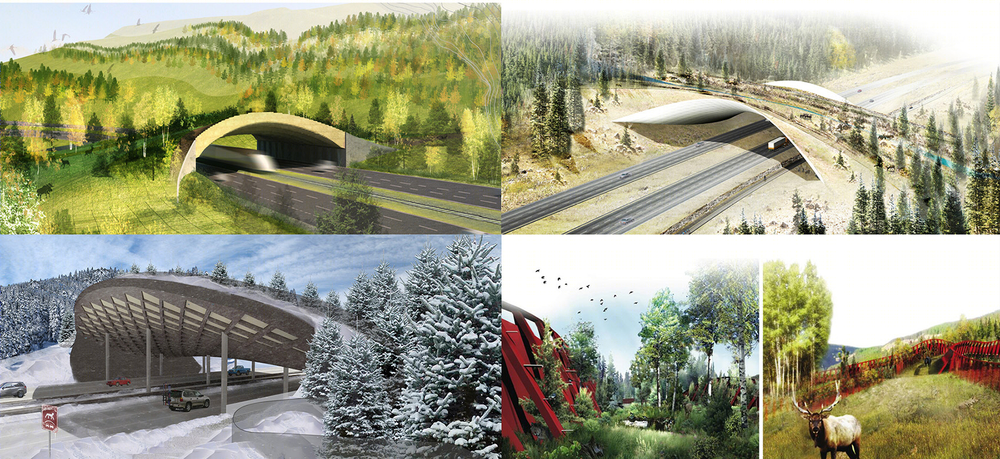
▲入围方案展示。竞赛致力于寻求兼顾成本效益、生态友好性、安全、教育性以及灵活性的野生动物通道方案。Finalists. The Competition sought to promote innovation in feasible, buildable context-sensitive and compelling design solutions for safe, efficient, cost-effective, and ecologically responsive wildlife crossings.

▲ARC竞赛要求设计中设置互动和教学的部分,从而使基础设施教育、启发公众和促进交流成为可能。 不论是科学家、学生还是旅客,都将通过野生动物通道与周围的自然景观重新形成连接。The ARC Competition required submissions to include a public education and communication component that made crossing infrastructure educational, revelatory and communicative to the public. From scientist to student to tourist, wildlife crossings reconnect us to the landscapes that surround us.
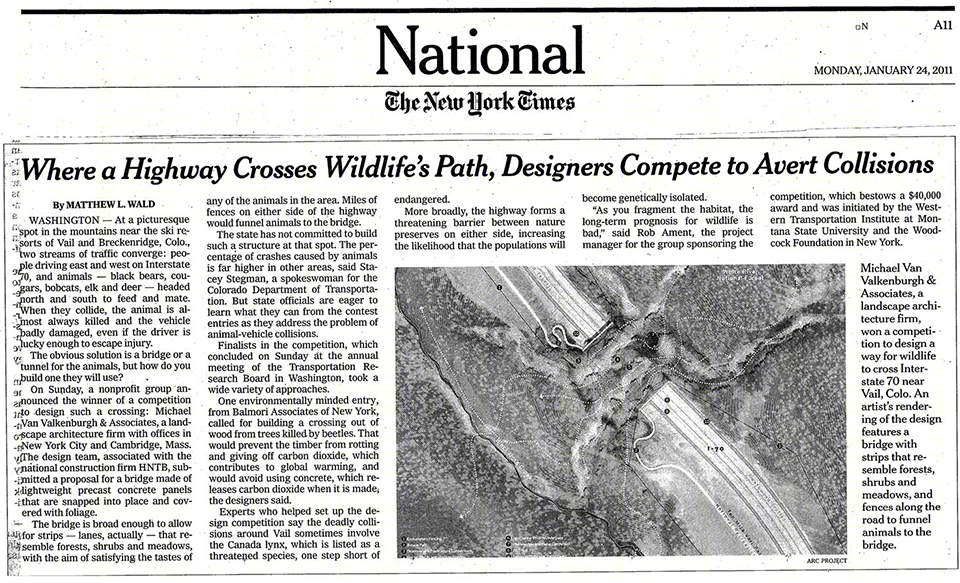
▲ARC竞赛的结果得到了广泛报道。《纽约时报》《华尔街日报》《快速公司杂志》和《哈佛公报》等各类知名出版物均强调了这些方案在解决景观连通性问题上的潜力。The results of the ARC Competition have been widely published and highlight the potential of design to solve issues of landscape connectivity in high-profile national publications including: Fast Company Magazine, New York Times, Wall Street Journal, and Harvard Gazette.
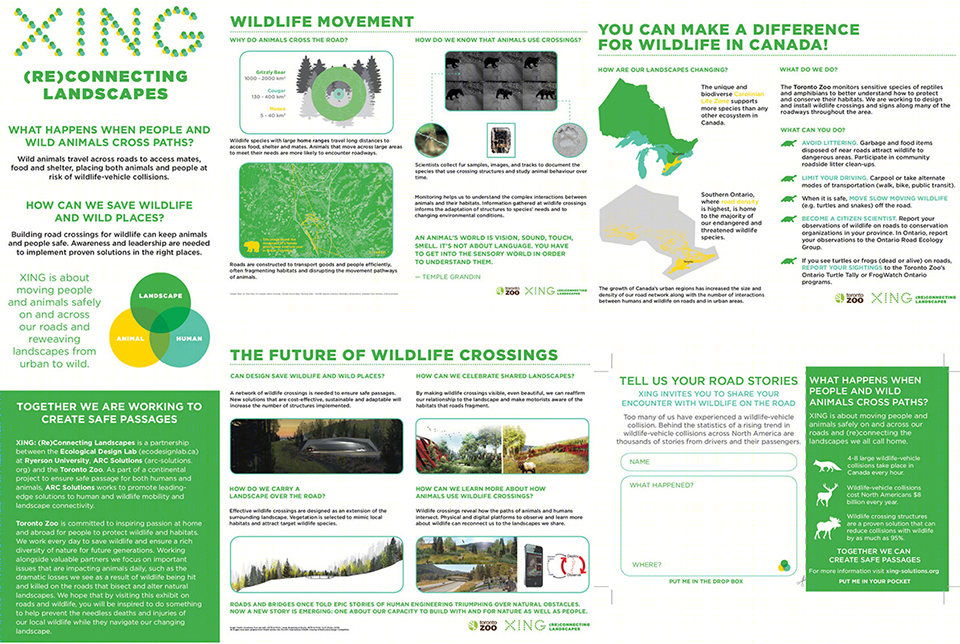
▲“XING:(重新)连接景观”是一项教育性的公共互动展览,促使公众就人类与野生动物的关系展开关于景观连通性的对话。XING:(Re)Connecting Landscapes. Elements of an educational, interactive exhibit that communicates issues of wildlife-vehicle conflict and the solution of wildlife crossing infrastructure to the public.
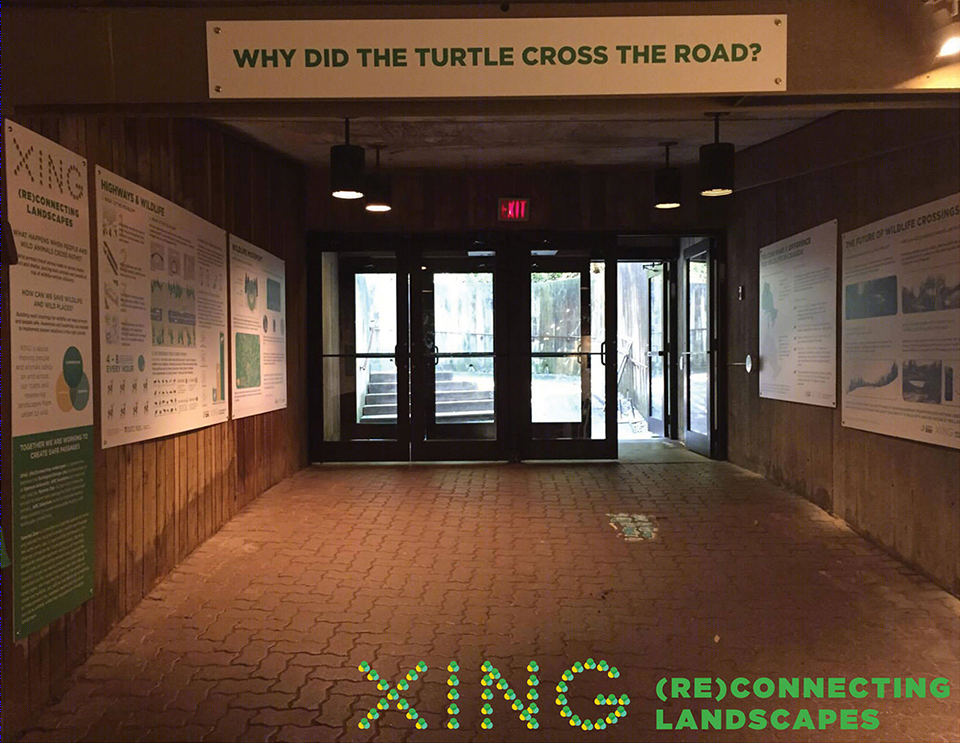
▲展览:乌龟为什么过马路?WHY DID THE TURTLE CROSS THE ROAD?
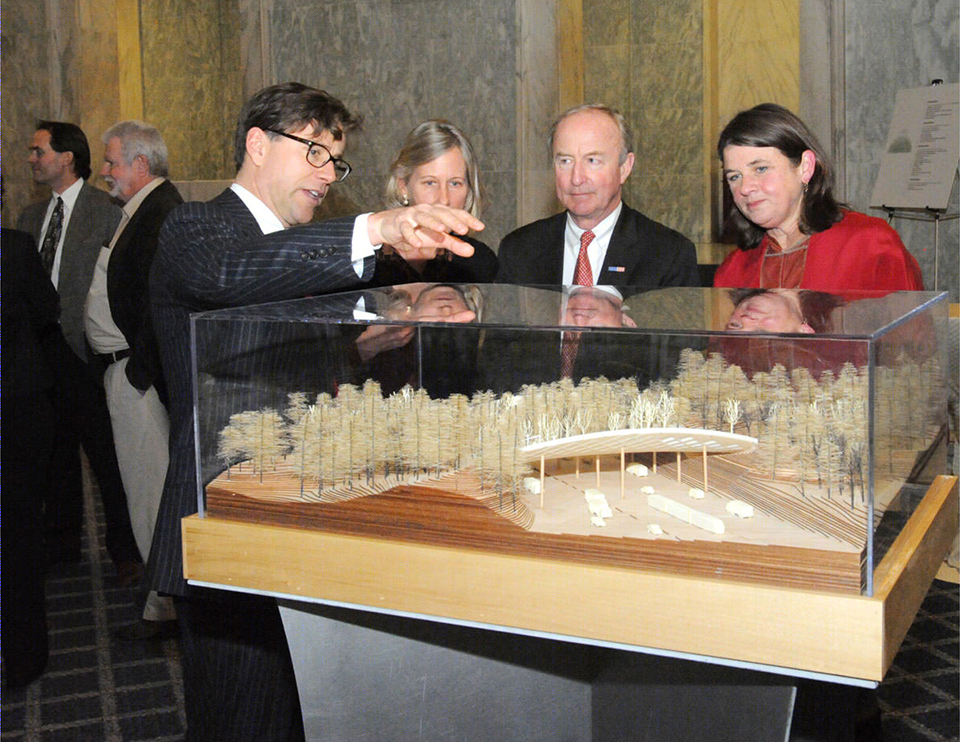
▲竞赛作品展橱。ARC竞赛作品已经在国会大厦(华盛顿)等著名场馆中展出,并在国际生态和运输会议(西雅图)和怀特博物馆(班夫)进行展示。Competition showcase. The results of the ARC Competition have been showcased in a variety of prestigious venues including the Capitol Building (Washington, DC). International Conference on Ecology and Transportation (Seattle, WA) and Whyte Museum of the Canadian Rockies (Banff, Alberta).
ARC, the Animal Road Crossing project, is an interdisciplinary partnership working to facilitate new thinking, new methods, new materials and new solutions for wildlife crossing structures to (re)connect landscapes.
One of the greatest human-made barriers, roads impede wildlife movement and fragment landscapes. In the United States alone, motorist collisions with wildlife result in the death of 1-2 million large animals and more than 26,000 injuries and hundreds of human fatalities annually. Inspired by the prototypical crossing structures in Banff National Park that bridge the TransCanada highway, ARC’s mission is to move people and animals safely across North America’s roads. Conceived to find an interdisciplinary solution to a complex problem, ARC sponsored the world’s first International Wildlife Crossing Infrastructure Design Competition (competition.arc-solutions.org), challenging interdisciplinary design teams that included the most innovative landscape architectural, engineering, transportation and ecological professionals from around the world to develop cost efficient, ecologically responsive, safe, educational and flexible wildlife crossing solutions.
The ARC competition ran in 2010 and attracted 39 interdisciplinary teams of more than 100 of the world’s best scientific and design professionals from nine countries. From these, five international teams were short-listed. The competition culminated in January 2011, when a jury of internationally-recognized experts in design, engineering and ecology selected the winning design by HNTB and Michael Van Valkenburgh & Associates (MVVA). Collectively, the five finalist designs have garnered a wide spectrum of media coverage for their innovation and promise.
Today, ARC has evolved into its post-competition phase, known as ARC Solutions (arc-solutions.org). An interdisciplinary, not-for-profit partnership, ARC Solutions works broadly to innovate, educate and promote wildlife crossing infrastructure. Comprised of three initiatives (Communications, Technology Transfer and Implementation), ARC is working to raise awareness about innovative crossing solutions with the broader goal of promoting wildlife crossings where needed to (re)connect fragmented landscapes.
Although the competition focused on a particular crossing site, ARC is about much more than a single bridge for wildlife: it tells a compelling story of the transformational power of ecological design to spur development of a new, timely and critical niche that has progressed from the relatively obscure to increasingly mainstream across professional, institutional, academic, and citizen audiences. In so doing, ARC has informed innovation, improved ecological effectiveness, and advanced the implementation of wildlife crossings, while raising public awareness of and support for this critical public infrastructure need.
Significant accomplishments since ARC’s inception seven years ago include activities to elevate awareness and overcome organizational and cultural barriers to implementing crossings using traditional and nontraditional communications techniques in creative, accessible ways:

